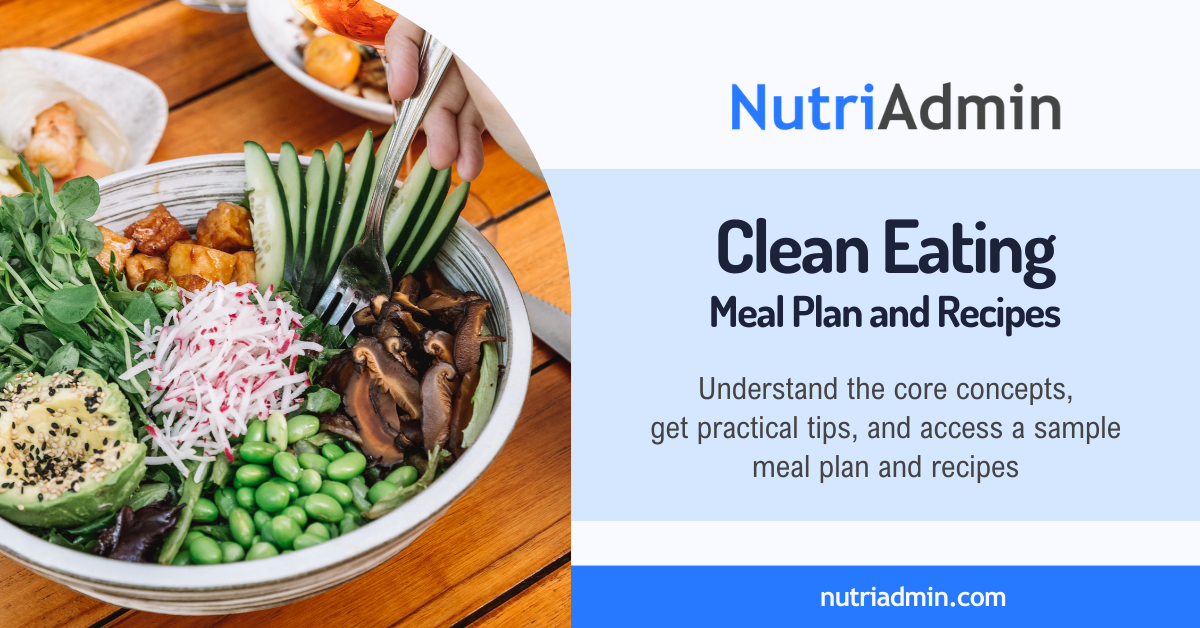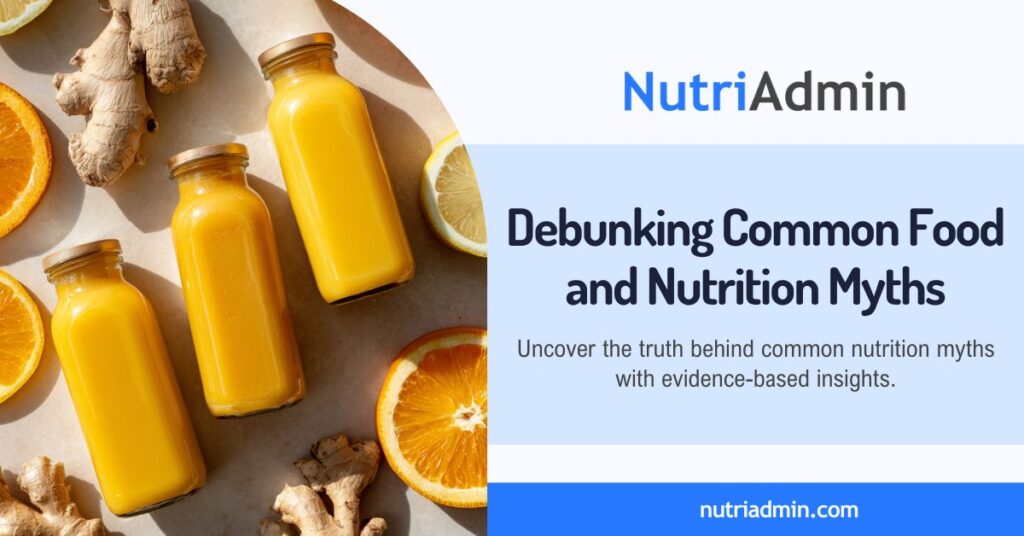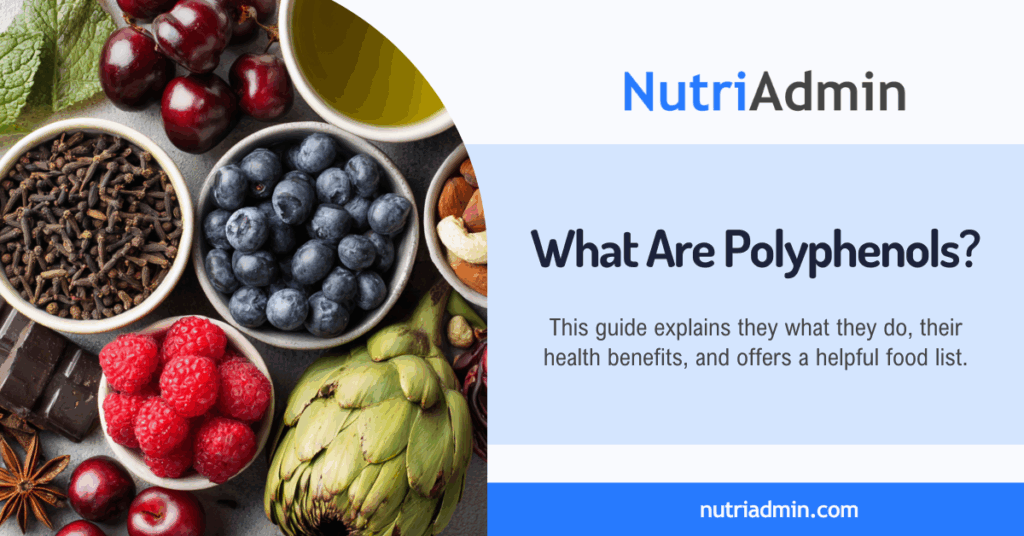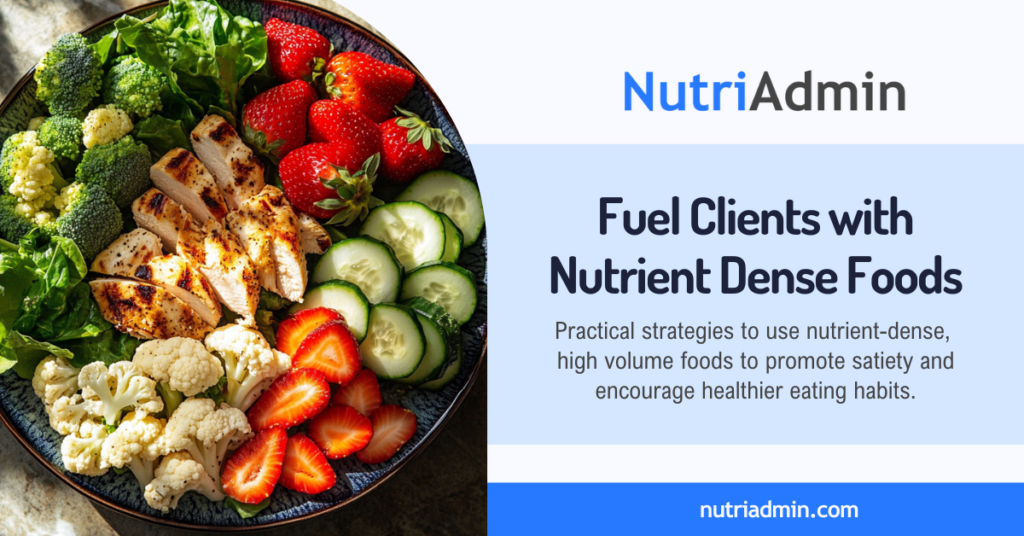Do clean eating meal plans and recipes automatically mean healthy, or is it just a big marketing buzzword?
Let’s find out everything about this controversial diet, from people’s opinions to the pros and cons, along with practical tips on how to follow it. Make sure to stay until the end for access to a free downloadable clean eating meal plan, food list, and recipes.
What is Clean Eating?
While the concept of clean eating is widely embraced, it lacks a specific definition and has no strictly defined set of rules. It can vary based on individual interpretations.
Clean eating involves choosing minimally processed foods that are as close to their natural state as possible. This includes focusing on fruits, vegetables, whole grains, and lean proteins while avoiding processed foods, added sugar, refined grains, alcohol, and artificial sweeteners.
Some individuals take clean eating to a more extreme level by avoiding soy, gluten, dairy, legumes, preservatives, artificial colors, flavors, and other additives altogether.
Perceptions of Foods Labeled as Clean
When you see Clean on a food label or hear someone talking about eating clean, what is the first thing that comes to mind?
According to a 2022 study by the British Food Journal, consumers perceive clean labels as indicating that a product is less processed, free from undesirable ingredients, and produced with ethical considerations. Foods labeled as clean are often considered to be healthy, low-calorie, socially responsible, appealing to the senses, and made with reliable products.
Pros and Cons of Clean Eating Meal Plan
Now that you understand the most common perceptions of clean eating, you might be able to relate to them. However, what are the advantages and disadvantages of clean eating as opposed to the common perceptions associated with it?
Benefits
Adopting a clean eating diet offers numerous benefits. It emphasizes the consumption of whole, natural foods while discouraging the intake of processed alternatives.
Consuming a diet primarily made up of whole foods such as fruits, vegetables, lean proteins, and whole grains can help increase fiber intake and reduce consumption of saturated fat, added sugar, and excessive salt. These are linked to reduced risk of heart disease, lower cholesterol levels, improved blood sugar control, and improved gut health.
Furthermore, consuming ultra-processed food has been linked to an increased risk of negative health effects, particularly related to heart and metabolic health, mental well-being, and mortality. Decreasing the consumption of processed foods reduces the intake of added sugars, unhealthy fats, and artificial additives, which in turn helps with managing weight and lowers the risk of developing several chronic diseases.
Disadvantages
It’s important to be aware that certain variations of a clean eating diet can be extremely restrictive, excluding entire food groups like grains, legumes, and dairy, even without food allergies or intolerance.
The perception that certain foods are “unhealthy” or “dirty” can create a negative relationship with food, inducing feelings of guilt. These may contribute to the development of disordered eating and nutrient deficiencies.
Additionally, some people with limited time to prepare their own food may struggle to follow clean eating, which emphasizes whole foods and often requires cooking most meals at home. This may not be practical for everyone.
Practical Tips When Starting Clean Eating Meal Plans
To start meal planning for clean eating as a beginner, here are some practical tips to help you get started:
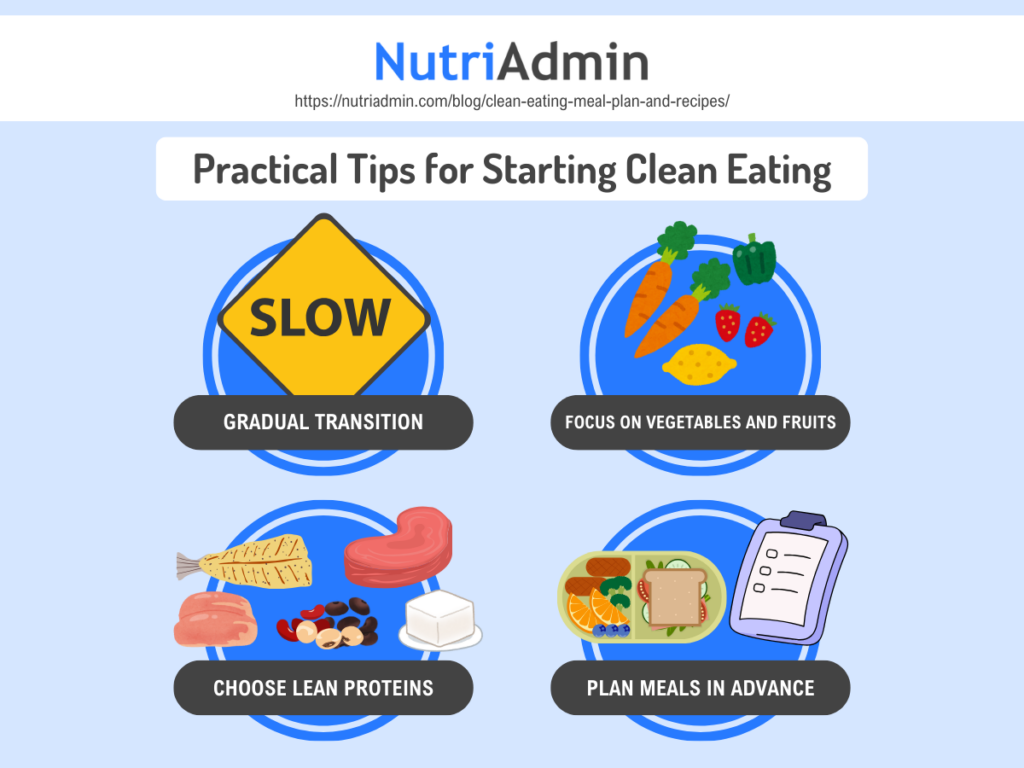
Gradual Transition
Start by slowly incorporating more whole, unprocessed foods into your meals. Replace processed snacks with fresh fruits, nuts, or vegetables. You can also replace refined food products with whole versions.
Focus on Vegetables and Fruits
Half of your plate should consist of a variety of colorful fruits and vegetables, which can provide you with different essential nutrients and fiber. It is actually recommended to consume 30 types of plant foods in a week to improve gut microbiome diversity.
Choose Lean Proteins
Consider choosing lean protein sources or plant-based proteins. These choices are beneficial because they contain lower levels of saturated fat while still providing essential nutrients.
Plan Clean Eating Meals in Advance
Make sure to dedicate some time to plan and organize your meals using fresh, whole ingredients so that you don’t have to depend on convenience foods. You can either create weekly or monthly meal plans depending on your preferences and lifestyle.
Be Flexible
Clean eating often involves following strict food rules, which can be quite restrictive. It’s important to adopt a flexible and forgiving approach to yourself when you consume foods that don’t align with these rules. Remember to allow yourself to enjoy a variety of foods in moderation without experiencing feelings of guilt.
Planning Clean Eating Meals
Planning your meals in advance can be incredibly helpful for maintaining a clean eating diet. By carefully considering and preparing your meals ahead of time, you can ensure that you are consuming whole and nutritious foods that fit the clean eating diet. This can also help you avoid impulsive or unhealthy food choices.
The following are ways that can help you create customized clean eating meal plans:
- Learn how to make recipes to add to meal plans.
- Find clean eating meal plan ideas.
- Create clean eating meal plan templates that you can reuse with different clients.
- Utilize ChatGPT to help in creating clean eating meal plans.
- Get inspiration from free meal plans online. You can download a free meal plan and recipes in the later part of this article to help you get started.
- If you are a nutrition or fitness professional, using a meal planning software solution would be ideal.
Clean Eating Food List
A food list can serve as a helpful guide when creating meal plans for clean eating and providing ideas for meals. While clean eating has no specific definition, there are no strict guidelines concerning which foods are allowed or forbidden. The following list includes common foods typically included or excluded in a clean eating meal plan.
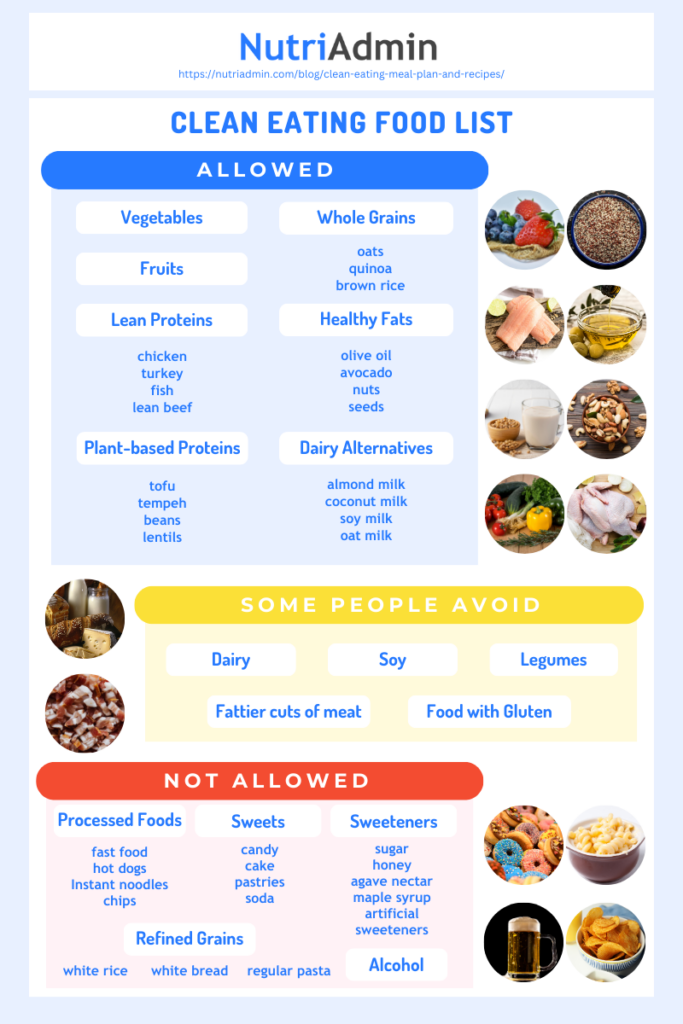
Foods Allowed in a Clean Eating Meal Plan
When following a clean eating diet, you can consume a wide variety of whole and minimally processed foods.
- Fruits and vegetables: Aim for a variety of colors and types to ensure you get a wide range of nutrients.
- Plant-based or lean proteins: Opt for lean protein sources such as chicken, turkey, fish, tofu, and legumes.
- Whole grains: Choose whole grains like quinoa, brown rice, oats, and whole-grain bread and pasta.
- Healthy fats: Include sources of healthy fats in your diet, such as avocados, nuts, seeds, and olive oil.
- Dairy or dairy alternatives: Choose low-fat or non-fat dairy options. Otherwise, opt for unsweetened plant-based alternatives like almond or soy milk.
Foods Not Allowed in a Clean Eating Meal Plan
- Processed foods: Pre-packaged snacks, fast food, and most convenience foods.
- Refined sugars: Including candy, desserts, and sugary beverages.
- Artificial sweeteners: These are found in diet soda, sugar-free gum, and various low-calorie foods.
- Trans fats: Often present in fried foods, baked goods, and margarine.
- Highly processed fats and oils: Like hydrogenated oils and refined vegetable oils.
- White flour: Found in white bread, pastries, and other baked goods made with refined flour.
Clean Eating Meal Plan
If you are a nutrition or fitness professional offering meal planning services to your clients, it is important to have reliable meal planning software that can help you make high-quality and effective meal plans quickly.
In NutriAdmin, a software for nutritionists, dietitians, coaches, and personal trainers, there is a meal plan generator feature that allows you to create individualized meal plans with simple and delicious recipes in just 60 seconds. You can set parameters such as calories, macros, cuisines, cooking equipment, diets including clean eating, and many more.
You can download the sample clean eating meal plan with recipes below to help you get started in creating meal plans for your clients.
Clean Eating Recipes
NutriAdmin also offers a feature that allows you to search its database of nutritionist-vetted recipes. This recipe database includes a variety of delicious clean eating recipes that you can use to create effective meal plans for your clients.
You can incorporate the following clean eating drink, snack, breakfast, lunch, and dinner recipes from NutriAdmin’s recipe database into your meal plans or share them with your clients.
Summary
Clean eating focuses on consuming whole, minimally processed foods close to their natural state.
A clean eating food list includes a variety of fruits, vegetables, lean proteins, whole grains, and healthy fats. Foods to avoid include processed snacks, refined sugars, and artificial sweeteners.
Benefits of clean eating include increased fiber intake, reduced risk of heart disease, improved gut health, and better blood sugar control.
However, very restrictive versions can lead to nutrient deficiencies or negative relationships with food. To start clean eating, gradually incorporate more whole foods, plan meals in advance, and be flexible.
